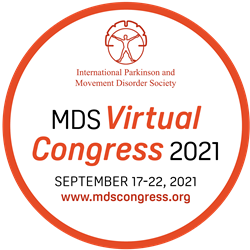
MDS Virtual Congress 2021
This strongly suggests that more white PD patients seek care at the best centers and non-whites and minorities seek care elsewhere.
MILWAUKEE (PRWEB)
September 14, 2021
People with Parkinson’s Disease (PD) who are from racial and ethnic minority groups that are traditionally underrepresented in medical literature have been found to have reduced quality of life relative to their white peers, according to a new study being presented at the MDS Virtual Congress 2021.
Although racial and ethnic disparities are a growing area of interest in medicine, the impact of these factors for PD patients specifically remains understudied. In this study, Di Luca et al. examine the quality of life, therapies used, falls, and hospitalizations of traditionally underrepresented minority populations with PD. Parkinson’s Disease Questionnaire-39 (PDQ-39) was used to assess quality of life for the over 12,000 study participants. Several differences were observed in the study, and the authors make specific note of differences between minority groups and whites related to levodopa equivalent dose intake and quality of life.
Hubert Fernandez, MD, Professor of Medicine (Neurology) at Cleveland Clinic, commented on the study saying, “The most recent events in America, and around the world, have placed front and center the injustices and double standards faced by people of color and minority ethnic populations. This has awoken the medical community as well to reflect on how we have been treating our own patients of color and minority ethnicities–whether they face a similar, albeit indirect and unintentional, “discrimination” or disengagement from the medical community. The study by Di Luca, et al is a wakeup call that the medical profession is not immune to these double standards. In my opinion, this study is relevant in three main ways. First, it is a large, real-world study looking at patients treated at supposedly the world’s best Parkinson treatment centers with the most proactive and multidisciplinary mindset; they set “the gold standard” for how Parkinson patients should be treated. Second, the study showed that in the centers included, the proportion of Black and Hispanic patients seeking care were disproportionate to the general population. This strongly suggests that more white PD patients seek care at the best centers and non-whites and minorities seek care elsewhere. And finally, the study highlighted that even when Blacks and Hispanics were seen within these centers, they experienced a significant gap not only in the care they receive (e.g. lack of interdisciplinary referrals; lower levodopa doses), and more importantly their outcomes (i.e. lower quality of life scores). The reasons for these are likely deep-rooted and multifactorial. Studies such as these remind us of the long road ahead in providing equal access and optimal treatment for all patients, regardless of their color or ethnicity.”
About the MDS Virtual Congress 2021:
Meeting participants gather to learn the latest research findings and state-of-the-art treatment options in Movement Disorders, including Parkinson’s disease. Over 9,000 physicians, scientists and medical professionals from more than 100 countries will participate virtually to view over 30 hours of educational content and 1,300 scientific abstracts submitted by colleagues from around the world.
About the International Parkinson and Movement Disorder Society:
The International Parkinson and Movement Disorder Society (MDS), an international society of over 11,000 clinicians, scientists, and other healthcare professionals, is dedicated to improving patient care through education and research. For more information about MDS, visit http://www.movementdisorders.org.
Share article on social media or email:

